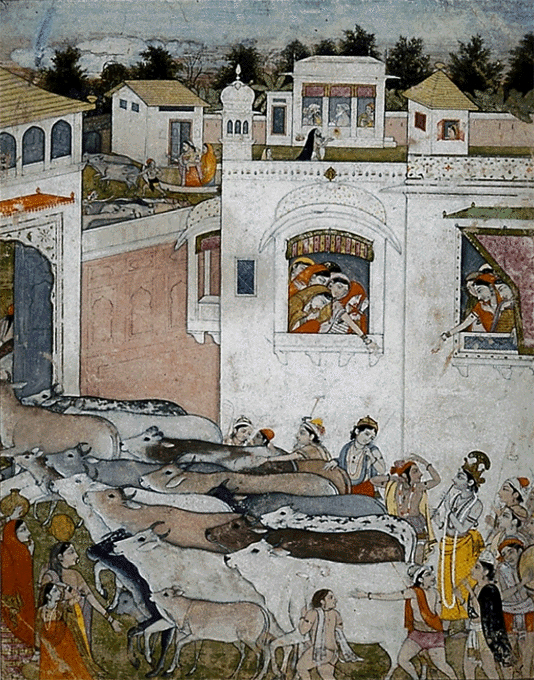
|
|
|
|
BY: SUN STAFF

The Hour of Cowdust Jan 31, 2012 — CANADA (SUN) — A serial presentation of India's artistic legacy in paintings, sculpture and temple architecture. THE PAHARI SCHOOLS Today we continue our survey of the last primary school of miniature paintings in this series – the Pahari School. The Pahari region spans the states of Himachal Pradesh, parts of the Punjab, Jammu/Kashmir, and Garhwal in Uttar Pradesh. Including under this primary school thus far, we have discussed the Basohli and Guler Schools. Following the survey of Kangra School paintings, we will close the series with one final sub-school – the folk style of paintings of Kulu-Mandi. On the timeline, the Kangra School is said to have followed the Guler School in development, emerging as a third phase of Pahari painting, in the last quarter of the 18th Century. In our last segment, on the Guler School, we mentioned the close connection between the long-standing Guler painters and the successive Kangra style.

The Hour of Cowdust (detail) The dominant characteristic that defines the Kangra School is easily traced from the Guler – a fine, delicate and sophisticated line of drawing merged with a naturalist approach to the content. The school was named for its similarity in likeness to the paintings of Raja Sansar Chand of Kangra. We find women painted in profile to have the nose quite inline with the forehead, the eyes long and narrow, and the chin sharp. Hair is treated as a flat mass, and there is little modeling of figures. The Kangra style flourished in many places throughout the region: Kangra, near the northern border of Himachal Pradesh, Guler, Basohli, Chamba, Jammu, Nurpur, Garhwal, etc. Among the finest Kangra miniatures are those attributed to the Nainsukh family, whose members were Hindu artists trained in the Mughal style and patronized by the Kangra rajas.

The Acolyte and the Jujube Tree Other Pahari artists were patronized by the Punjabi leader, Maharaja Ranjit Singh and the Sikh nobility in the early 19th century. They produced many portraits and miniatures in a modified version of the Kangra style, and these continued to be executed through the middle of the 19th century.

The Disrobing of Draupadi The content of many Kangra painting is rasa-lila, and the Bhakti cult themes of Radha and Krishna's pastimes were among the most favoured by Kangra artists. Many illustrations for Bhagavata Purana and Gita-govinda are found, along with Ragamala and other familiar Vaisnava texts. In our next segment, we'll cover the succession of Kangra leaders who were most responsible for the development of this school of art, and in particular, the grandson who infused the Kangra School with his own devotion for Sri Sri Radha Krishna.

Abhisarika-nayika (Rushing to an Assignation in the Monsoon)
| |